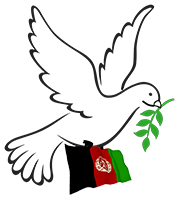Since the start of the second wave of deportations, 93,000 Afghan refugees have been forcibly returned from Pakistan.
The year 2024 was marked by significant challenges for Afghan refugees in host countries. Key issues included the second wave of forced deportations from Pakistan, continued mistreatment in Iran and Pakistan, and the execution of Afghan citizens in Iran.
Forced Deportations and International Assistance
Since the start of the second wave of deportations, 93,000 Afghan refugees have been forcibly returned from Pakistan. In response, the Islamic Emirate and international organizations, including the International Organization for Migration (IOM) and UNHCR, initiated efforts to support returnees.
Afghan refugees faced severe challenges in host countries, including executions, torture, bans on education and work, and even restrictions on bread sales in some Iranian cities. Mustafa, a refugee deported from Iran, said:
“They captured us last Saturday, and today we arrived here. We were severely mistreated, beaten, and treated worse than animals. If the Islamic Emirate creates job opportunities, we wouldn’t need to go to neighboring countries to work.”
The Islamic Emirate and international organizations urged host countries, particularly Iran and Pakistan, to treat Afghan refugees with respect and refrain from forced deportations. Mawlawi Abdul Kabir, the Deputy Prime Minister for Political Affairs, appealed:
“We request neighboring countries and the international community to allow Afghan refugees to live freely and not expel them forcibly. Let them return voluntarily to Afghanistan.”
UNHCR’s Chief Representative for Afghanistan, Arafat Jamal, emphasized the importance of humane treatment:
“Our first message is to Pakistan and Iran, which is that you have been such generous hosts for 45 years. Please don’t stop right away; you must treat the Afghans with dignity and allow them to return safely and voluntarily.”
Deadly Incidents and Human Rights Violations
On October 16, Afghan refugees were attacked by Iranian border guards in Saravan, Sistan-Baluchistan, resulting in dozens of deaths and injuries. While Iran initially denied the incident, the Islamic Emirate launched an investigation, which later confirmed that two refugees were killed and 34 others injured. Hamdullah Fitrat, Deputy Spokesperson for the Islamic Emirate, said:
“So far, two martyrs and 34 eyewitnesses, some of whom were injured, have been transferred by the delegation. Others remain in Iran and Pakistan.”
According to reports from Iranian human rights organizations, at least 74 Afghan refugees were executed in Iran in 2024 for various alleged crimes. In response, the Islamic Emirate engaged with Iranian authorities to address these issues. Zabihullah Mujahid, the Islamic Emirate’s spokesperson, said:
“We are in contact with the Iranian government and have emphasized that their treatment of refugees must align with the law. Efforts are underway to transfer Afghan prisoners back to Afghanistan.”
Imprisonment and Prisoner Transfers
The imprisonment of Afghan refugees in Pakistan, Turkey, Iran, Iraq, and the UAE remained a significant challenge. On November 17, an Iranian delegation visited Afghanistan to discuss the transfer of Afghan prisoners. Following discussions with Afghan officials, it was revealed that 8,000 Afghan refugees are currently imprisoned in Iran, and plans for transferring 1,000 prisoners were finalized.
Mohammad Yousuf Mistry, Head of the General Directorate of Prisons, said:
“They promised to transfer more prisoners in the future. By the set timeline, other prisoners will also be handed over to us.”
Housing for Returnees
The Ministry of Refugees and Repatriation announced that it is waiting for the Islamic Emirate leader’s directive to begin distributing housing for returnees across 30 provinces in collaboration with the Ministry of Urban Development and Housing.
Abdul Mutalib Haqqani, spokesperson for the Ministry of Refugees and Repatriation, said:
“Currently, we are clearing settlements and carrying out developmental work. Basic facilities like clinics and schools are being built, and once we receive orders, land distribution will begin.”
According to the latest IOM report, over 1.2 million Afghan refugees returned to Afghanistan from Pakistan and Iran in 2024.
 Afghanistan Peace Campaign
Afghanistan Peace Campaign